Averting Disaster - A Guide To Computer Backups (2014)
by Brett Howse on May 21, 2014 9:00 AM EST- Posted in
- IT Computing
- Mac
- Apple
- Windows
- Cloud Computing
- macOS
Built-in Backup Tools - Windows 7
The first method of performing backups is to use the built-in backup tools in Windows 7, 8.1, or OS X. These offer both image based backups, as well as file based backups. This is your first line of defense. If your budget is low, the bare minimum that you want to do is at least back up your files and system image to an internal or external drive, or a network share.
Windows 7
Windows 7 includes a built-in utility called Backup and Restore (formerly Backup and Restore Center in Windows Vista) which allows you to perform backups to internal or external disks on your local PC. If you have Windows 7 Professional, Enterprise, or Ultimate, Backup and Restore will also allow you to perform backups to a network share. Backup and Restore allows both file level, and image level backups. Windows 7 also has a built-in feature called Previous Versions, which will leverage both Windows Backups as well as restore points in order to allow you to restore files to a different point in time.
Backup and Restore, when configured to perform both file and system level backups, will actually perform both a file level, and a system level backup. Unlike more sophisticated backup software, it doesn’t leverage the system level backups for file level restores, meaning it is going to take up more space than a backup solution which does just system level. It does allow incremental backups and versioning though. The biggest issue with Windows 7’s built-in Backup and Restore is its inability to backup files and images to a network share for Starter and Home Premium – the two versions most people have. It also can’t backup files that are on a network share. That being said, it’s a great place to start for anyone who wants to back up to an internal or external drive for file and system protection. Let’s run through how to configure it:
- Go to the Control Panel, then choose System and Security, and select Backup and Restore.
- On the Control Panel applet screen, choose Set up backup.
- First you will be prompted as to where to save your backups. Your options are any local disk, USB disk, or CD/DVD. If you have Windows 7 Professional, Enterprise, or Ultimate, there will be an additional selection here to choose a network share and enter the necessary credentials to access it. Choose your backup disk and click Next.
- Next, you will be asked what to back up. The default selection is to back up all user data saved in libraries and default user folders, as well as a system image. If you keep all of your data in your libraries, this should be fine for you so click Next. If you keep data in other folders, or only want to backup certain locations, select Let me choose and click Next.
- If you’ve chosen Let me choose, you will be prompted to select what data files to backup. By default, all user Data files are selected, but you can also expand under Computer and choose what to backup, or just backup everything. Also there will be a selection to include a system image for restoring your entire drive. If you have space on your backup drive, it’s a great idea to include this. Click Next when you’ve selected everything you need to backup.
- Next, you will be provided a summary of the backup job which you can review. The summary page will display the default schedule (Sunday at 7pm) and you can change the schedule to perform backups more often. Weekly backups would be the minimum that I would perform. Since the backups are incremental, it’s probably a good idea to bump this up to daily. Choose a time where you are not likely to be using the computer. Once you are happy, click Save settings and run backup, and the system will perform the initial full backup.
That’s it. Your computer is now backing up automatically at whatever schedule you chose. The next thing you should do, assuming you selected to create a System backup, is to create a bootable disk to recover your system. It’s easier to do this now, than when you need it. To do this, simply go to the Backup and Restore applet in the control panel, and choose Create a system repair disc. You will be prompted to place a CD or DVD in your drive and then just select Create disc. A small bootable disc will be burned which will allow you to restore a complete system image from a local disk, or a network share. If you do ever need this, bear in mind that a system restore will completely erase all files on the restore target.
If you want to restore individual files, you have a couple of options. You can use the Backup and Restore applet to browse for files and folders of your backups and choose which ones to restore. If you do a restore this way, and select restore to original location, it will do a standard file copy of the restored files to their original locations. If the original files are still in that location, the standard dialog will appear letting you select whether to replace the originals, copy with a new file name, or do nothing. Be careful if you do this as you will have a good chance of overwriting files you meant to keep.
The other method for restoring files is to use the Previous Versions interface to select which file and folder, and from which date to restore. This is likely the preferred method since it will display graphically all previous versions of the file or folder. To invoke this method, simply browse to the file or folder you wish to restore, right click, and choose Restore previous versions. This will display all versions that are in the backups, and allow you to open the file to view it, copy the file, or restore the file.
Overall, the Windows 7 backup utility is fairly good. With both file level and image level backups available, you can recover from practically any scenario. Its glaring omission is the lack of network support on the home versions of Windows 7, which is really unfortunate. Many people would rather back up their files to a NAS, especially in any house with more than one computer. But if you are running Windows 7 and you just have a single computer, it is worthwhile using this for the price of a single hard drive to back up to. Unfortunately, almost no one used this backup system so it was replaced when Windows 8 was launched.


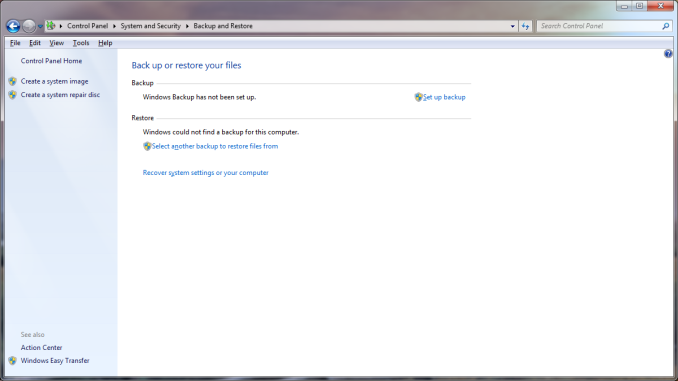
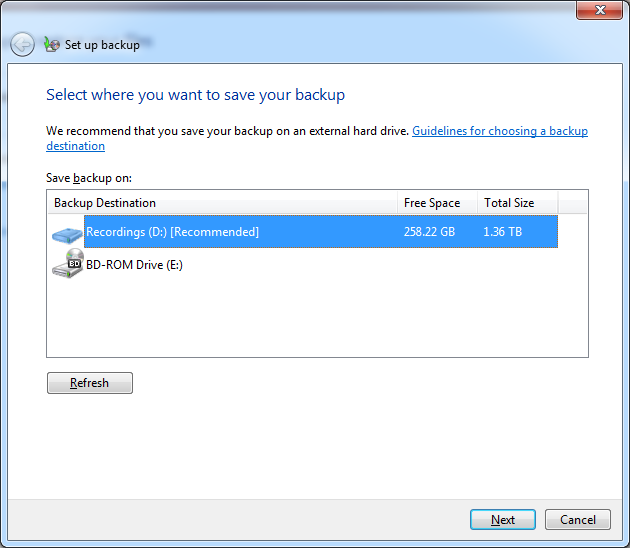
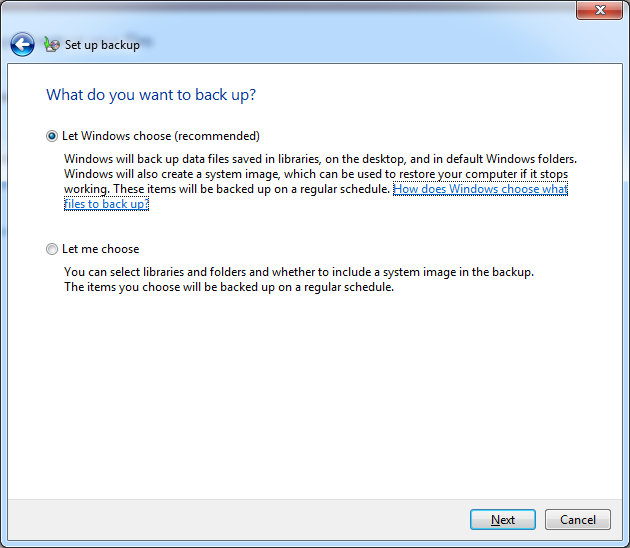
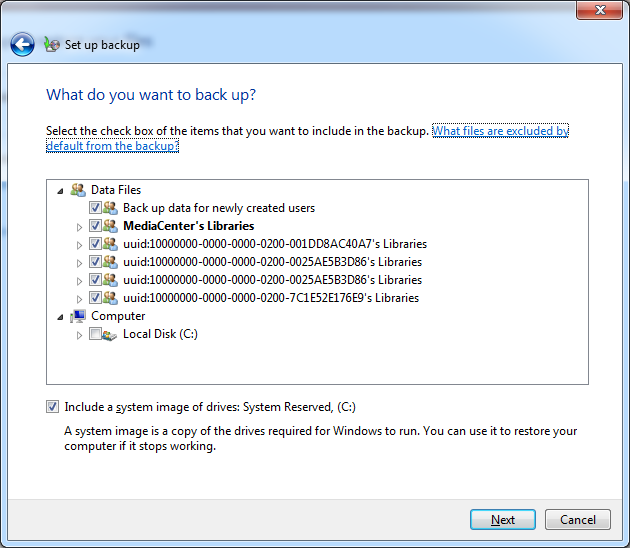
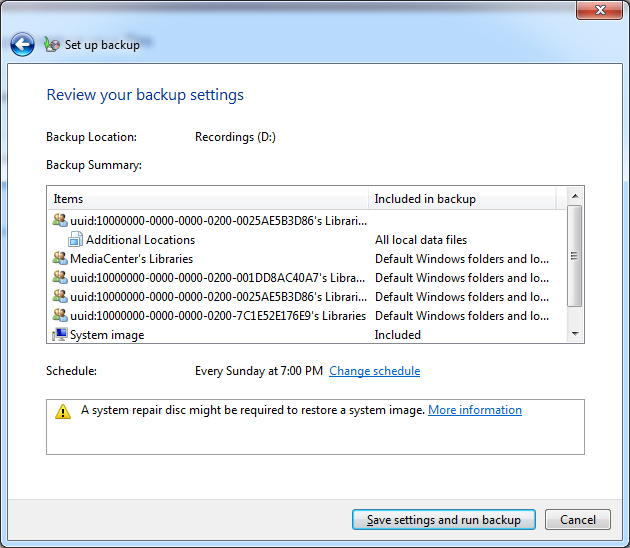





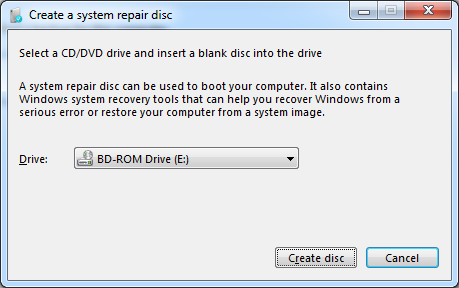
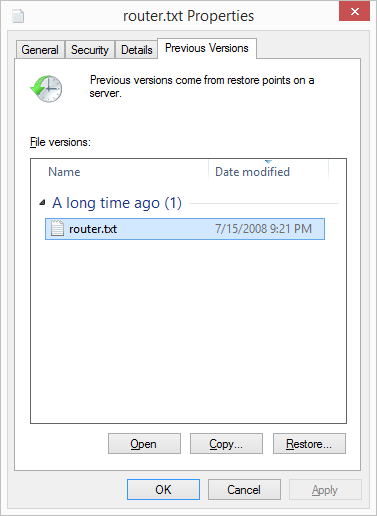








133 Comments
View All Comments
jimhsu - Thursday, May 22, 2014 - link
Availability, capacity, cost: pick two. Sounds like (for a business) that you need an enterprise-grade solution, and if you need next-day availability, crashplan won't be able to deliver that. Crashplan does offer initial drive seeding and backup-to-door: however those also take a week. If a single day of downtime is unacceptable, you probably need something in-house combined with professional services that offer overnight rush delivery -- and that's $$$.dstarr3 - Wednesday, May 21, 2014 - link
I took a much simpler approach. I have a hard drive which is just a clone of my entire computer, and I keep it in my desk at work. Once a week, I bring it home, run error checks, and do another clone onto the disk, take it back to work the next morning. I also have a local backup disk for files, a portable hard drive. The benefit is that one of my backups is off-site, and both of the backups are never plugged in during non-use, so there's no threat of power surges killing the drives. I'm only susceptible to fire or theft at this point, and that would have to happen to both my home and my work simultaneously to be a problem.rooman - Wednesday, May 21, 2014 - link
A drive at work is a good idea; an alternative (work isn't always an option) is to store the cloned drive in a safety deposit box which provides an extremely secure location. One probably wouldn't clone once a week, but once a quarter would protect against the worst case of total data loss.dstarr3 - Wednesday, May 21, 2014 - link
Yeah, I considered a safety deposit box, as well, but in some areas (like mine), it's bloody impossible to get one. hahaBeethovensCat - Saturday, May 24, 2014 - link
I did the same - am using SyncToy between my internal data drives and FreeFileSync between my computer and two external HDDs. The external HDD is entirely encrypted with TrueCrypt. I have a couple of external HDDs that are copies of my data drives (leave Windows on C: alone). Then I just take a drive to work once a week or two. Daily syncs (why bother with a backup program, when one can use a sync program?) to an encrypted USB stick. Works well and with 2Tb of HDD costing around 100$ there is no excuse for not having a couple of those.Kevin G - Wednesday, May 21, 2014 - link
Overall an excellent article!
Backups using Shadow Volumes should note some of its limitations: you'll need to have enough free disc space to store another copy of your largest file. For example, say you downloaded a 10 GB installed for a new game you'd need to have another 10 GB of free disk space for Window's Shadow volume to back it up. With the move to SSD's, this could be an issue in some cases.
I do agree that RAID IS NOT A BACKUP but when backing up to a NAS, the NAS should be using RAID 1/5/6 etc. A paragraph on the introductory page does go into these points but I've always felt the need to discuss backup reliability in this context. It helps clear up potential questions like 'if RAID isn't a backup, why are you backing up to RAID storage?' The answer is in the same paragraph as RAID projects against disk failure. Just in my experience, I typically need to hammer in the idea of what 'what good is backing up to a hard drive if a hard drive dies?' as the case for RAID 1/5/6 on a NAS. This idea can be obtained from the context of the article but I've found this needs more emphasis in my experience.
The issue of RAID disk failure leads into one topics that I've found missing: media reliability. The article mentions hard drives, USB sticks, optical and the cloud as targets for backup storage. (For consumer usage, I would say it is safe to omit tape but it still exists.) How long the media is stored and its ability to be retained over time does matter. This is more of a long term problem with USB and optical media as after several years, corruption can creep in. Hard drives of course can fail but typically they're in an active environment so that you'd know exactly when it failed. With RAID, it is possible to recover from failed media but once an optical disk rots or a USB flash stick is dead, the data on it is gone. This article does cover the media reliability of the cloud which is unique: you continually have to pay. Stop paying and you lose your backup data. There is one open question though with cloud backups as none have been around for a long time. Issues like outages are also possible with the cloud but so far many of the backup providers have been good in this regard.
ltcommanderdata - Wednesday, May 21, 2014 - link
For the built-in backup options for Windows 7/8 and OS X is there a way to limit the size of the backup without having to partition such that multiple computers can backup to one drive without directly competing with each other for space?For Time Machine you mention that it'll automatically delay the scheduled backup if the backup location is unavailable. Does Windows 7/8 do the same? I'm thinking of laptops that are always out and about so hopefully they won't throw up distracting error prompts when the network store location is not available.
Brett Howse - Wednesday, May 21, 2014 - link
I don't have any Windows 7 machines to test, so I can't answer that. Windows 8 has an offline cache though to which allows backups/restores when the device is disconnected:Advanced Settings in File History
File History allows you to fine tune how it works including:
Which target storage device is used
How frequently files are checked and backed up
How much space is used locally to cache backup versions of your files when the target backup device is disconnected
How long backup files are retained
Which folders in your libraries are excluded from backup
sepffuzzball - Wednesday, May 21, 2014 - link
Have to say...I've been running Windows Server Essentials 2012 since I was sad about WHS going by the wayside, and I love it.I'm running it in a VM on my ESXi server, it backs up all my clients with no issues. Then the WSE backs that up to a different storage pool (Solaris/ZFS), and then that gets kicked off-site.
Now I just need to find out a cheap solution to backup off-site the ~40TB worth of stuff on the file server (and then the upload speeds to actually back it up!).
coburn_c - Wednesday, May 21, 2014 - link
I just lost 6TB to a failed RAID 5 array. Thank you Seagate/China. The RMA drives are malaysian, so maybe that gives hope. Anyway, you can talk backups all you want but backing up 6TB is neither time nor cost economical.